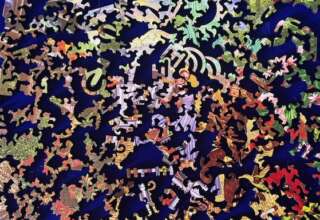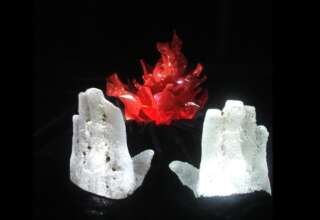
With this overview of the collusion process in place, I wish to dig a bit deeper, use some psychodynamic terminology. Basically, collusion begins to take place through something called projective identification. In an organizational setting, collusion occurs when members of the organization project different “objects” (images, assumptions, personality characteristics) onto their leader. These are aspects of themselves (“internal objects”) that they refuse to recognize: their own fears, their own competencies, their own anger, their own arrogance, etc. They don’t accept it in themselves, because to do so would make them anxious, make them feel personally responsible for some decision to be made or action to be taken, or make them feel bad about themselves (“I don’t want to be an angry woman.” “I don’t want to be an arrogant man.” “I don’t want to feel afraid or appear to be a fool or coward.”) By placing the praise or blame on their leader, members of an organization can take it off themselves.
Furthermore, the leader usually has some personal reason to accept this projection. The identification is, in other words, “sticky.” The leader is not a velcro don on whom nothing adheres for very long. The leader feels a bit afraid himself, and thus readily accepts assumption made by other members of the organization that he is very much afraid. The leader at some level believes that she is very competent and courageous (or would at least like to think of herself as competent and courageous). Thus, she welcomes the admiration and assumptions of competence and courage made by other members of her organization. This acceptance of praise and assumed mastery is particularly prevalent (and destructive) among those leaders who are narcissistic—as I will note in more detail later in this essay.
The collusion is further reinforced by the overall culture of the organization. Commonly-held projections on leaders (as dissenters, visionaries, fight leaders, flight leaders, jokesters, etc.) in the organization will reinforce projections onto any one person in the organization. “All the executives in this organization are corrupt and self-serving!” “He is just another one of those damned fools that they promote in this organization.” “You know, engineers always operate this way.” “All of those accountants are nothing more than numbers crunchers.” These culture-based (and systemic) clusters of assumptions and expectations are known as role suction: certain functions (both formal and informal) in the organization lead to certain repeated patterns that are sustained (self-fulfilling prophecies) by certain projections. “Actors” are assigned a specific role in the organizational “play” and cannot easily shift to a different role. Other members of the organization readily join in the play, as supporting characters, colluding with the principle actor in sustaining the play. As Kets de Vries (2003, p. 75) notes in dramatic fashion, the role player (particularly the imposter) “like the Pied Piper of Hamelin, seems to weave a magic spell, and people are only too ready to follow. Imposters [and other role-suctioned actors] seem to be able to awaken otherwise dormant tendencies within us by which we can be carried away, blinded to reality.”









